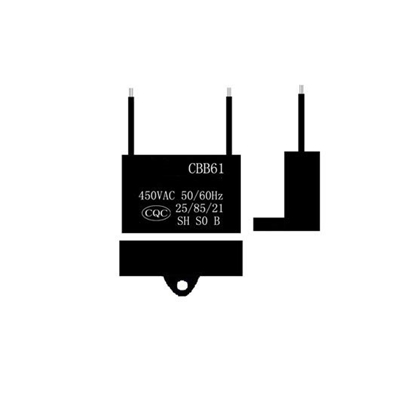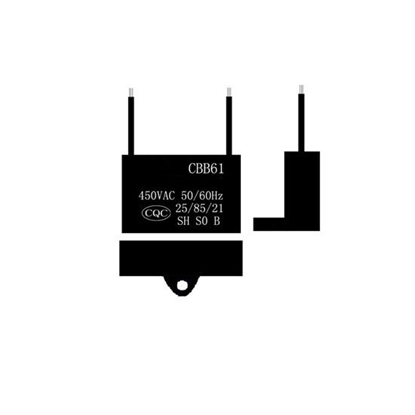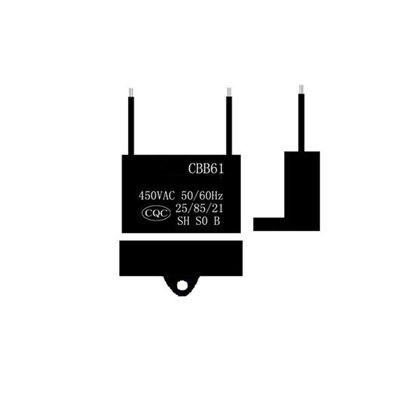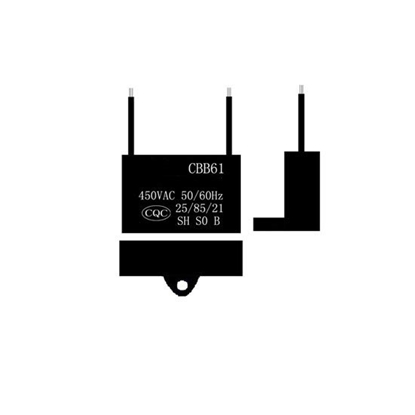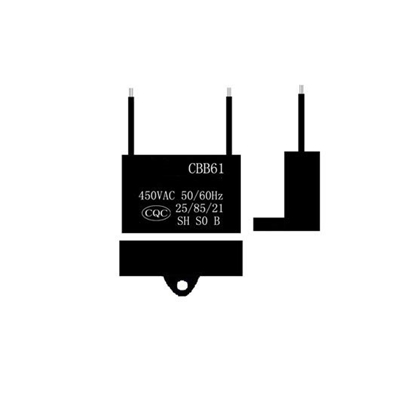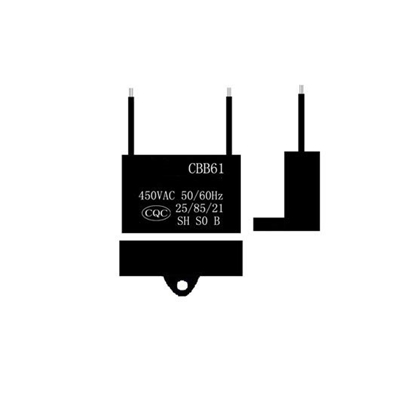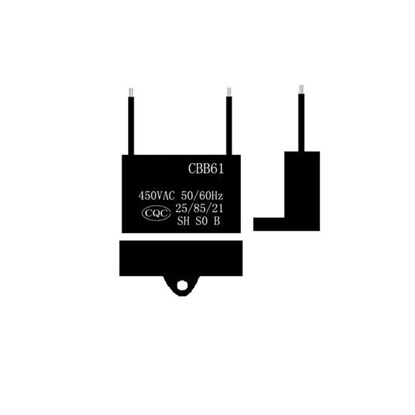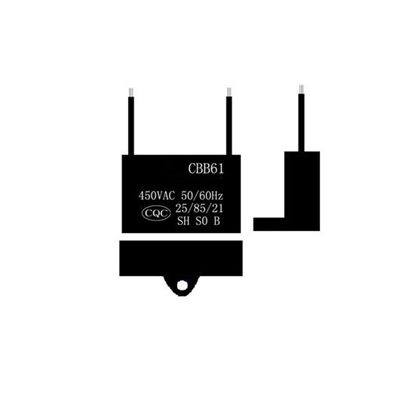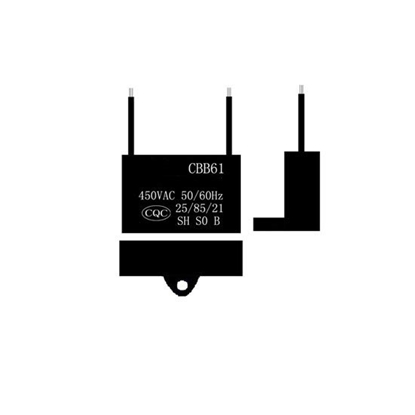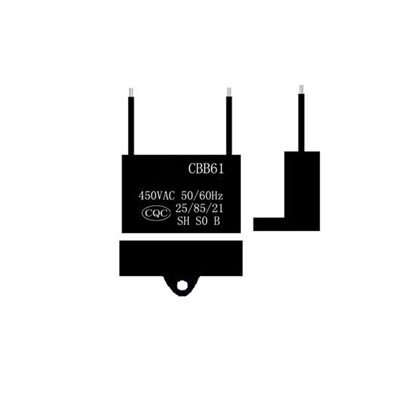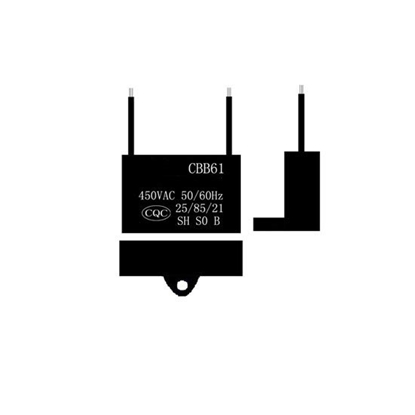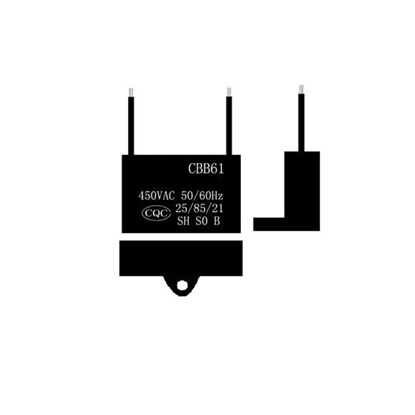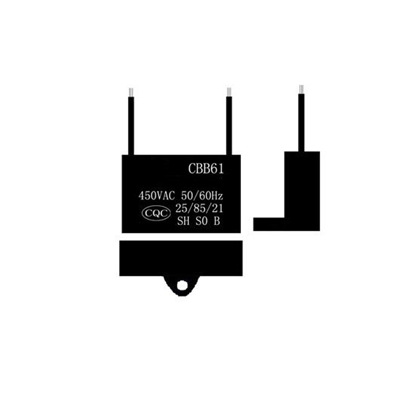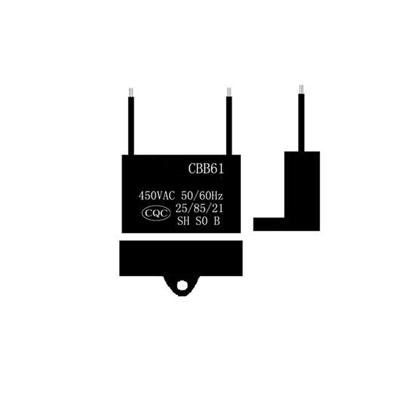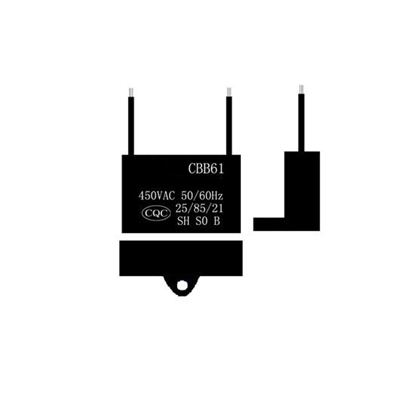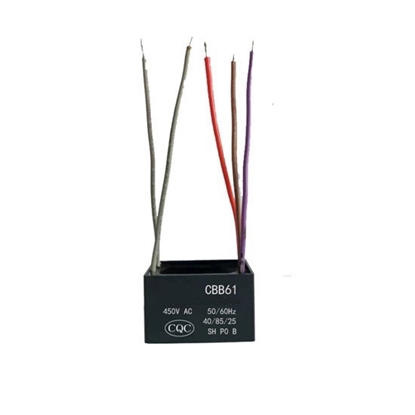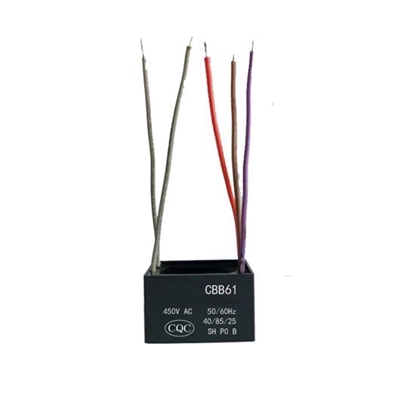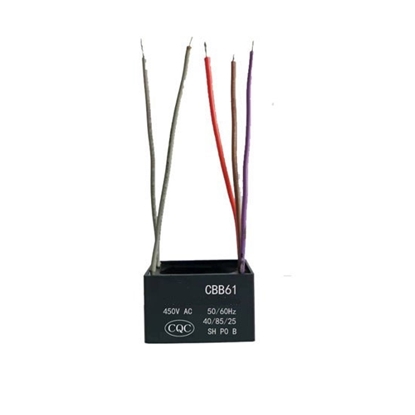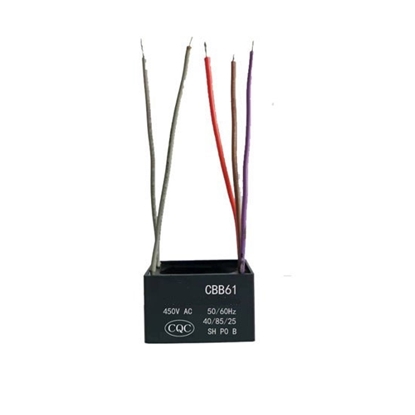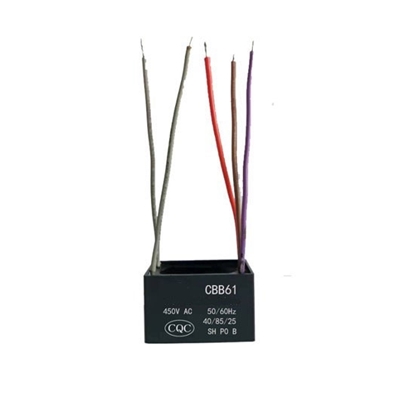Fan Capacitor
0.5μF 450V Ceiling Fan Capacitor
0.8μF 450V Ceiling Fan Capacitor
1.2μF 450V Ceiling Fan Capacitor
1μF 450V Ceiling Fan Capacitor
1.5μF 450V Ceiling Fan Capacitor
1.8μF 450V Ceiling Fan Capacitor
2.5μF 450V Ceiling Fan Capacitor
3.5μF 450V Ceiling Fan Capacitor
4μF 450V Ceiling Fan Capacitor
5μF 450V Ceiling Fan Capacitor
6μF 450V Ceiling Fan Capacitor
8μF 450V Ceiling Fan Capacitor
10μF 450V Ceiling Fan Capacitor
12μF 450V Ceiling Fan Capacitor
20μF 450V Ceiling Fan Capacitor
450V Ceiling Fan Capacitor, 1.5μF+2μF+3μF
450V Ceiling Fan Capacitor, 1.5μF+1.2μF+3μF
450V Ceiling Fan Capacitor, 1.8μF+1μF+2μF
450V Ceiling Fan Capacitor, 2μF+2μF+3μF
450V Ceiling Fan Capacitor, 4μF+5μF+6μF
What are the capacitance values of ceiling fans?
ATO offers 0.5 μF, 1.8 μF, 5 μF, 8 μF to 20 μF ceiling fan capacitors, and variable fan capacitors. ATO CBB61 capacitor is used for starting and running single-phase motors with relatively small power supply at 50Hz/60Hz AC power supply for air conditioning fans, electric fans, exhaust fans, etc. fan capacitor is used for starting and running single-phase motors with power supply at 50Hz AC power supply and can work continuously. It is suitable for underground coal mine, railroad, aerospace and other places with high requirements.
Do fan capacitors have polarity?
The capacitors are not positive or negative, the terminals are connected to the external metal layer, and the motor capacitor must be non-polarized. ATO-CBB61 fan capacitors are widely used in ceiling fans, wall fans, standing fans, industrial fans, range hood fans, ventilating fans, pumps, motors, generators, etc.
How to replace the capacitor of the air conditioner fan?
The capacitor is a small part of your air conditioner that sends pulses of energy to the motor to help it start the fan. When the capacitor is bad, you'll still hear your unit start up and shut down, but it won't blow cold air because the fan won't start spinning.
Diagnosing a bad capacitor
The simplest test is to wait until the condenser starts, then gently push the fan blades with a stick. If the motor starts and the fan continues to run, this is a sure indication that the start capacitor is not sending the necessary power pulses to make the fan run.
Replace the air conditioner fan capacitor
- find the original capacitor of the indoor fan motor of the air conditioner and replace it with a new capacitor of the same capacity according to the capacitor capacity marked on the capacitor.
- When looking for the installation location of the indoor fan motor capacitor, you can follow the indoor fan motor power supply line forward to find the capacitor so that it is easier and more practical to find.
- The capacity of the replaced capacitor should be consistent with the capacity of the original capacitor.
Run capacitor vs. start capacitor
The run capacitor is often associated with the start capacitor. The single-phase current flowing through a single-phase motor cannot produce a rotating magnetic field, so a single-phase motor must add a start winding with a capacitor to split the phase so that the current in the two windings produces a phase difference of nearly 90° to produce a rotating magnetic field. Most single-phase motors have a starter winding that is used when starting, and once the motor is started, a centrifugal switch is made to disconnect the starter capacitor from the power supply, thus disconnecting the starter winding.
However, there is another mode of operation, in which another capacitor (running capacitor) is connected in parallel with the starting capacitor, and when the motor is finished starting and running normally, the centrifugal switch cuts off the starting capacitor, but not the running capacitor and the starting winding, that is, the starting winding is involved in the normal operation of the motor, and this capacitor is called the running capacitor.
This way of operation increases the output power of the single-phase motor. In a double capacitor motor, the starting capacitor and the running capacitor are strung into the starting coil at the same time. After the motor starts, the starting capacitor is disconnected by the separation switch, while the running capacitor is involved in the operation with the starting coil. The starting capacitor has a larger capacity of about 200 microfarads, and the running capacitor has a smaller capacity of about 20-30 microfarads. There is also a single-capacitor motor, where the phase shift and run share a common capacitor, and the start itself is involved in the run after starting. Its capacity is determined by the power of the motor. Generally, it is between 8-20 microfarads.
What is the role of the run capacitor?
In fact, it is simply a capacitor to ensure that the capacitor can run properly. For the start capacitor, it can be simply understood as a start-up role. In the case of normal operation after start-up, the start capacitor will stop working while the run capacitor keeps the equipment running normally.

